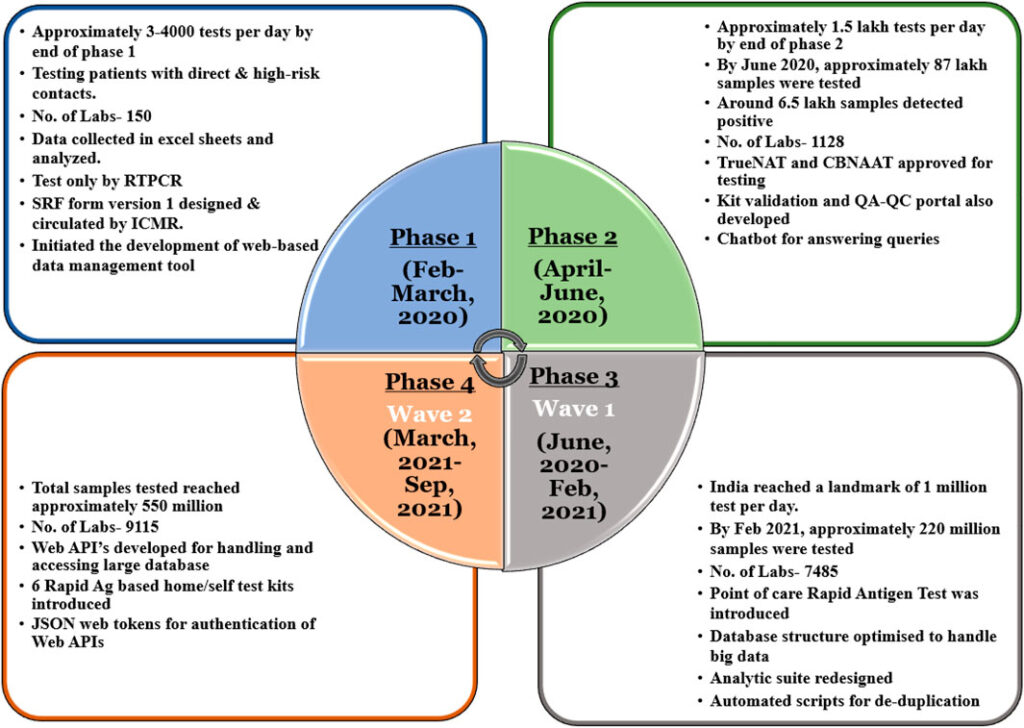By Dr Arun Mitra
The number of deaths due to COVID-19 in India during the peak of COVID as reported by the Government of India were 3.3 lakh. As per the worldometers website (https://www.worldometers.info/coronavirus/) the number of death due to COVID till 12 May 2025 is 533570. According to this information India stands at no.3 after USA with 1219487 deaths and Brazil 711380 deaths.
If we go by the total population our performance in managing the COVID appears to be better than many countries. The government of India has been patting its back on the basis of this information. But latest revelations from the government’s own sources, the Central Registration System (CRS), Sample Registration System (SRS) and Medical Certification of Cause of Death (MCCD) have brought forward startling difference between the number of deaths due to COVID projected by the government in 2021 when the COVID was as its peak.
There were several reasons to doubt government’s information about number of deaths being given at that time. Number of cases reaching the hospitals but not getting beds for treatment was very high. The cremation grounds were over worked and people had to wait for long hours to cremate their kith and kin who unfortunately could not survive. We cannot forget the scenes of dead bodies being cremated at the bank of the rivers. Assessments by researchers had put the number of deaths to be much higher than the claim made by the government. The WHO had put this number at nearly 47 lakh that is 10 times of the government’s claims. But all this was denied by the government blaming that these estimates are motivated.
But the new information that has come out now from the CRS, the number of deaths registered in 2021 was 10224506 while in the previous year this number was 8115882 deaths which means 2108624 more than 2020.
Similarly the Sample Registration System (SRS) which calculates deaths per 1000 of population showed Crude Death Rate to be 7.5 per 1000 in 2021 against 6 in 2020 i.e an increase by 1.5 per thousand. Looking at the previous years the average rate of death has been 6.35 per 1000 between 2014 to 2019 in the six years. Slight variation in number of deaths can occur from time to time. But when the figure is substantially different, this is to be pondered over. For excess deaths to occur there has to be some specific situation like any natural calamity, war or some man-made event. If we look at the years 2020-2021 the only unforeseen event that occurred was the COVID pandemic. Therefore it is obvious that the excess deaths which occurred in 2021 were due to COVID 19.
In an article ‘Analysis of errors in Medical Certificates of Cause of Death (MCCD) at a tertiary care institute in 2022’ published in the Springer Nature Link on 17.09.2024 it has been pointed out that errors in MCCD are frequent. According to earlier research conducted in India, between 50 and 60% of medical certifications indicating the cause of death filed to death registrants are erroneous. This suggests that while reporting the cause of death exact information is not taken care of.
The World Health Organization (WHO) Defines the Cause of Death (COD) in relation to writing MCCD. The Underlying Cause of Death (UCOD) is ‘the disease or the injury which initiated the train of morbid events leading directly to the death or the circumstances of the accident or violence that produced the fatal injury. Immediate Cause of Death (ICOD) is ‘disease or condition directly leading to death.
Medical certification of the cause of death provides epidemiological information for developing cause-specific mortality and disease trends, guiding the monitoring of health programmes and allocating health resources. Therefore, providing correct information on the cause of death is essential.
It is important to provide true data particularly in the cases of health issues. The researchers build their hypothesis on the basis of this data. With this we can study the social and economic trends, track the spread of diseases, and monitor environmental changes. Data also helps in decision making process. The research done is also authenticated. Therefore the data should not be misleading and should be away from any prejudice and political considerations. Science should be only central point to study and project the data.
It must be understood here that we have achieved success in eliminating small pox, Polio and now trying to control Tuberculosis, based on the data. Any falsification of information leads to complacency. This can further lead to faulty planning. In such emergency situation as COVID-19 in particular, all concerned must be careful in projecting the information. Any misinformation can cause difficulties in planning for the future. (IPA Service)

 New CJI B R Gavai’s Comments On Waqf Act, 2025 Have Alarmed Hindutva Petitioners
New CJI B R Gavai’s Comments On Waqf Act, 2025 Have Alarmed Hindutva Petitioners 